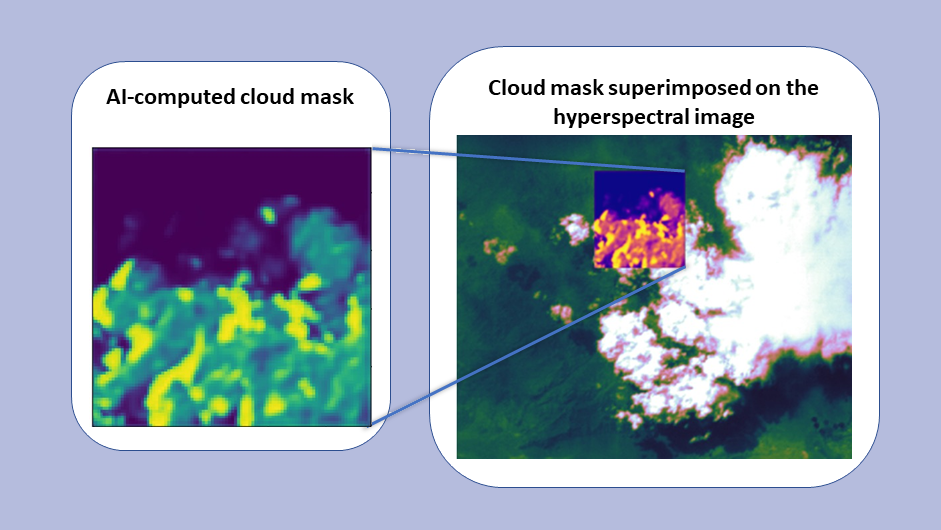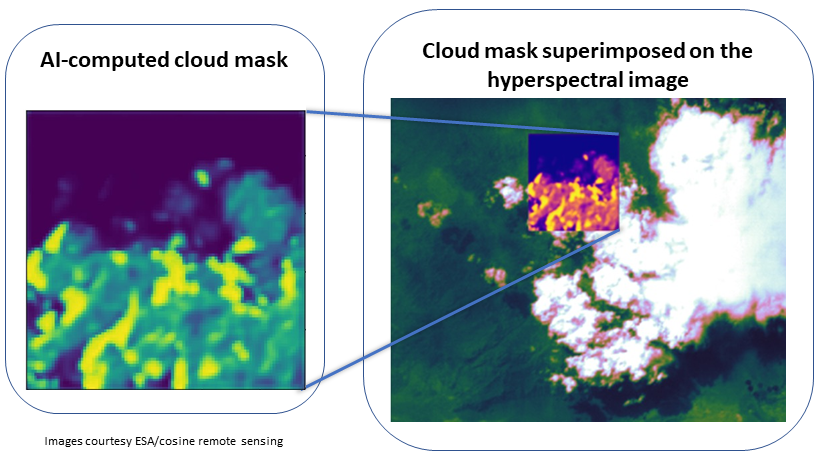Satellite Successfully Applies AI to Process Earth Observation Imagery In-flight in Historic First for Space

Ubotica Technologies announced today that its Artificial Intelligence technology has successfully enabled the first ever hardware-accelerated AI inference of Earth Observation images on an in-orbit satellite.
This is the first of a number of programmes in which Ubotica is working with leading players in the European Space sector to enable the development and deployment of highly performant Artificial Intelligence applications in Space, in a time and cost-efficient manner, using Commercial Off The Shelf (COTS) components. The Ф-sat-1 demonstrator has been developed by an ESA-funded consortium involving Ubotica Technologies (IE), cosine remote sensing (NL), Sinergise (SI), and the University of Pisa (IT).
Speaking after the acquisition of the first successful results, Aubrey Dunne, Co-Founder and Vice President of Engineering at Ubotica Technologies said “We are very excited to be a key part of what is to our knowledge the first ever demonstration of AI applied to Earth Observation data on a flying satellite. This is a watershed moment both for onboard processing of satellite data, and for the future of AI inference in orbital applications. By working on Ф-sat-1 with ESA and our European partners, we have achieved a breakthrough that demonstrates the real potential of AI for Space applications. This mission is the culmination of over two years of effort by Ubotica, in collaboration with ESA, to characterise and prepare the Myriad 2 device for deployment in Space, and to develop Ubotica’s AI technology that harnesses this compute to effectively address the opportunities that we have seen demonstrated for the first time ever today. For AI in Space the future is no longer coming – it has arrived”.
Max Pastena, Ф-sat-1 Technical Officer at ESA, commented after today’s confirmed demonstration success “This is a historic milestone in Space evolution. The successful application of accelerated AI on-board Ф-sat-1 is a landmark on ESA’s technology roadmap and embodies how the Agency is leading disruptive innovation in Space”. Josef Aschbacher, Director of Earth Observation Programmes, ESA said “This is a game-changer which puts the European Space Agency at the forefront of Space systems development. The excellent news of the successful AI inference performed for the first time in-orbit on a dedicated AI chip onboard Фsat-1 couldn’t have come at a better time for the agency and our stakeholders, as we open our annual Phi-week conference today, and gives us also the opportunity to recognize the excellence of the European industries in AI based applications and the excellent job done by Ubotica in the development of the AI Myriad-based board for Space application”. Gianluca Furano, ESA Data Systems and On-Board Computing Lead, European Space Agency said “Фsat-1 is demonstrating how ‘ultimate edge’ data processing can allow smallsats to achieve much more with the sometimes very limited resources they have. Cloud detection was a low hanging fruit, but our real target is to produce, from raw images, user friendly added-value data that can be directly beamed to consumers. This can be a ground-breaking evolution for small earth observation satellites.”

ENDS
Notes to Editors
Link to today’s ESA Press Release
About Ubotica Technologies
Ubotica Technologies, founded in 2016, develops and deploys Artificial Intelligence solutions for industrial and commercial edge computing applications using the Myriad family of Vision Processing Units. In addition to custom Neural Network development, the company specialises in combining Artificial Intelligence with Computer Vision pipelines in hardware-targeted applications. Ubotica employs 15 people across its Dublin (HQ) and Spanish offices, and is actively engaged in the Space, IoT, and Industry 4.0 segments.
Ubotica’s CVAI Toolkit™
The Ubotica CVAI Toolkit™ exposes the range of efficient Computer Vision (CV) and Artificial Intelligence (AI) capabilities of the Myriad family of devices to end users via a succinct API and a Myriad firmware image, enabling host-side user design and control of embedded CV and Image Signal Processing (ISP) pipelines that seamlessly integrate with Neural Network (NN) inference. By unleashing the processing power of Myriad through the API and firmware, the toolkit facilitates rapid application development and Myriad integration without requiring any embedded programming or direct control of the underlying hardware, saving learning effort and eliminating the need to access the full device toolchain. The Toolkit’s browser-based drag-and-drop interface for developing CV/ISP pipelines provides the ability to pre-process images prior to completely customisable NN inference.
About the European Space Agency
The European Space Agency (ESA) is Europe’s gateway to Space. ESA is an intergovernmental organisation, created in 1975, with the mission to shape the development of Europe’s Space capability and ensure that investment in Space delivers benefits to the citizens of Europe and the world. ESA develops the launchers, spacecraft and ground facilities needed to keep Europe at the forefront of global Space activities. Today it launches satellites for Earth observation, navigation, telecommunications and astronomy, sends probes to the far reaches of the Solar System and cooperates in the human exploration of Space.
About Ф-sat-1
